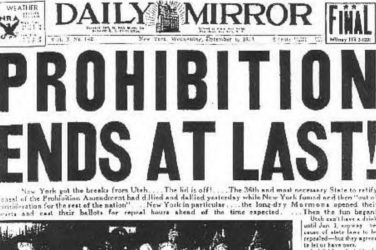Walgreens, the nation’s second-largest pharmacy chain, will pay $300 million plus 4 percent interest to settle Department of Justice allegations of improper dispensing practices as well as fraud. While the DOJ had not claimed Walgreens was liable in the opioid-involved overdose crisis outright, it had claimed the company “caused severe and concrete harm.” The DOJ announced the settlement April 21, a few days after filing it in the United States District Court for the Northern District of Illinois.
If Walgreens is sold or otherwise absorbed by a different company before the end of Fiscal Year 2031, it will owe an additional $50 million. The settlement comes a few weeks after Walgreens, which has seen its stock value nosedive by about 80 percent in the past five years, confirmed that by the end of 2025 it would be acquired by private equity group Sycamore Partners. The DOJ stated that the $300 million figure was determined based on the company’s ability to pay.
Its first payment of $20 million is due in May, with the full settlement due within the next six years. The allegations stem from what were originally four separate whistleblower lawsuits filed by former Walgreens employees, who will be collectively awarded about $4.25 million.
In January, the DOJ sued Walgreens for allegedly violating the Controlled Substances Act as well as the False Claims Act. The allegations that pertained to the CSA centered on Walgreens filling prescriptions that it knew were either invalid or not written for a “legitimate medical purpose,” or both. In particular, the lawsuit highlighted “trinity cocktail prescriptions”—the Drug Enforcement Administration’s term for a combination of an opioid, a benzodiazepine and a muscle relaxant, which has become the go-to example of the kind of “red flag” pharmacists are supposed to watch for.
The allegations under the False Claims Act describe Walgreens knowingly submitting false reimbursement claims for those same prescriptions, thereby defrauding half a dozen federal health care programs including Medicare, Medicaid and the in-house network for the Department of Veterans Affairs.
Walgreens had initially responded with a similar—albeit much more restrained—defense strategy as the one used by CVS.
Much of the DOJ’s January announcement of the lawsuit was verbatim what it had stated one month earlier when it announced a similar civil suit against CVS, the only US pharmacy chain larger than Walgreens. Between the two of them, the companies hold about 40 percent of the nation’s prescription drug retail market.
Walgreens had responded that same day with a similar—albeit much more restrained—defense strategy to the one used by CVS, which was to essentially act as if the DOJ was suing the company’s pharmacists rather than the company itself, and it was only getting involved because it couldn’t allow the DOJ to bully its employees with made-up rules that no one understands.
The CSA definition of “person,” in terms of the person responsible for improperly dispensing a medication, includes corporations as well as individuals. No individuals were named as defendants in the lawsuit.
According to the DOJ suits, both companies faced penalties of $80,850 per substantiated violation within the past decade or so, and up to $25,000 per violation for older ones. The CVS case is still ongoing.
Both lawsuits link the respective companies to loss of life, stating that in some cases patients had fatally overdosed shortly after the pharmacies improperly filled their prescription. However, the DOJ allegations against Walgreens were slightly less pointed than those it had brought against CVS, which had included explicitly claiming that “CVS’s actions contributed to the opioid crisis.” The Walgreens lawsuit merely stated that prescription drug diversion contributed to the crisis, and “Walgreens’s corporate management made choices that caused these millions of violations of federal law.”
Over the past two decades, the government’s inordinate focus on opioid analgesics, and pharmaceuticals drugs in general, as factors in the overdose crisis has been catastrophic for chronic pain patients who rely on those prescriptions for day-to-day functioning.
Alongside “trinity” prescriptions, for example, DEA red flags have included higher-dose prescriptions for opioids, which not only discourages providers from seeing patients who need those prescriptions so that they don’t get flagged, but flags the patients for suspicious activity too.
Other red flags like traveling long distances to see a provider or having multiple providers belie the fact more patients are forced to do this as the government makes their medications less accessible. It’s also never been the case that a drug’s therapeutic value can be determined by looking at a prescription.
Image (cropped) via Walgreens Boots Alliance




